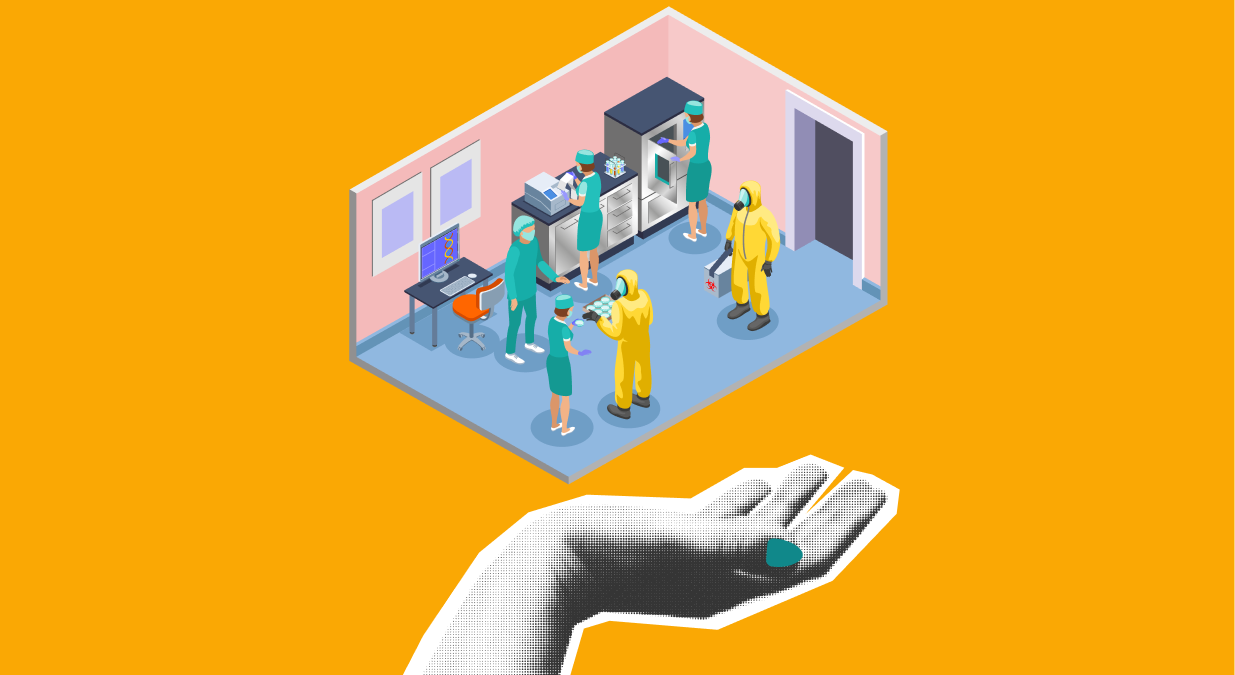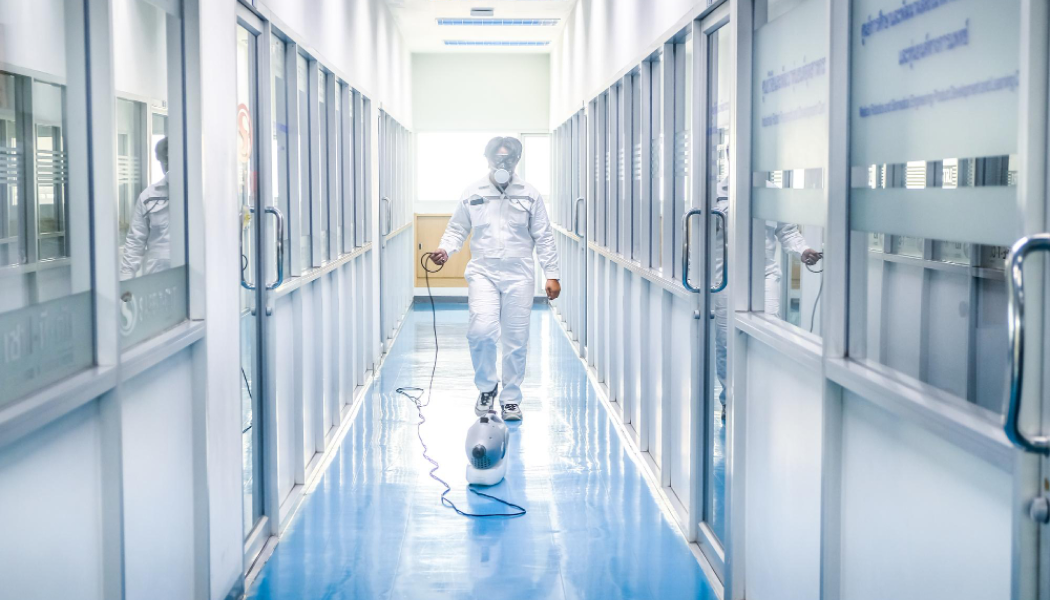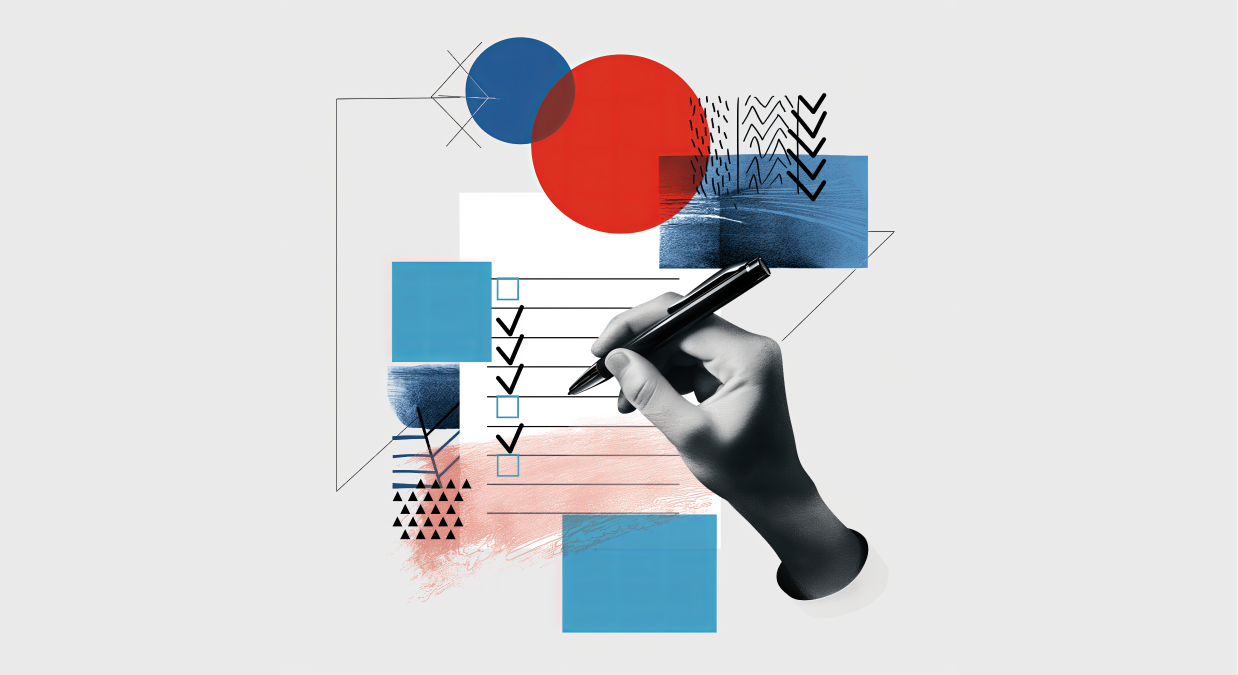by Vaibhavi M.
6 minutes
Pharmaceutical Cleanroom Standards: Ensuring Patient Safety And Compliance
Explore pharmaceutical cleanroom standards, classifications, and regulatory guidelines to ensure contamination-free manufacturing and patient safety.

I still remember my industry training days. Pharma plants were always on the city’s edge—just far enough to feel like a mini expedition. After metros, cabs, and a dusty walk, I’d arrive coated in a layer of grime thick enough to grow tulsi.
But everything changed at the cleanroom gate!
Hair net. Gloves. Shoe covers. Full suit. Mask. The ritual wasn’t just hygiene—it was a boundary. That dust I carried? Not welcome inside.
Stepping in felt like crossing into another world—air filtered, silence humming, and precision in every move.
That’s the heart of cleanroom standards—not just cleanliness, but control, consistency, and an uncompromising respect for the process.
In this blog, we dive into what it takes to maintain that invisible shield—and why it’s absolutely non-negotiable in pharmaceutical manufacturing.
What is Pharmaceutical Cleanrooms

Pharma cleanrooms are specially designed to control contamination by microbes and airborne particles. Cleanrooms in pharma play a critical function in maintaining controlled environments to ensure product quality, safety compliance, and regulatory standards. It aids in preventing contamination of drugs, vaccines, and other medical products.
The environment within a cleanroom is regulated not only by particles but also by temperature, humidity, and pressure, which includes HVAC systems (Heating, Ventilation, and Air Conditioning), all of which can influence the quality of pharmaceutical products. The controlled environment in clean rooms protects both personnel and patients while maintaining sterile manufacturing integrity.
Importance of Cleanrooms in the Pharmaceutical Industry
Cleanrooms in pharmaceutical manufacturing serve an essential role in establishing product quality standards and compliance with regulatory requirements while ensuring patient protection. These controlled production environments minimise the risk of contamination by guarding the production process and the patient's health.
Pharmaceutical cleanrooms are the foundation of manufacturing that ultimately protects patient health. Here are some major roles of cleanrooms in the pharmaceutical industry.
Ensuring Product Quality
The environment in cleanrooms remains strictly controlled to minimise airborne particles, microbial contamination, and other impurities. For instance, producing life-saving antibiotics, blending APIs, drying the mixture, or even placing a tablet compressing machine in a cleanroom is required.
The manufacturing process remains free from contamination throughout production; thus, pharmaceutical products maintain their safety attributes and effectiveness and maintain the stability of pharmaceutical products.
Regulatory Compliance
The FDA and the European Medicines Agency (EMA) require that pharmaceutical cleanrooms be utilised to attain strict quality and safety standards. Product approval and market authorisation depend on proper adherence to regulatory requirements like GLP, GMP and GCP.
Protecting Worker and Patient Safety
The primary purpose of establishing cleanroom facilities in pharma manufacturing is to control airborne material transmission while protecting workers.
The pharmaceutical industry applies cleanroom environments to provide secure workplace conditions for personnel working with potentially dangerous materials, including radioactive chemicals and cytotoxic drugs used in oncology, as cleanroom practices protect both workers and patients.
Facilitating Research & Development
Cleanrooms in pharmaceutical R&D facilities maintain a stable environment for experiments, formulation development, and testing procedures. Variables like temperature and humidity, alongside particulate matter control, contribute to precise and trustworthy research outcomes.
The research area involving cell and gene therapy and testing laboratories must operate under strict, cleanroom requirements.
Preventing Cross-Contamination
Air filtration systems combined with strict gowning protocols and carefully implemented sterile personnel procedures protect product quality by preventing cross-contamination among production batches, drug substances and dosage forms and sustaining product integrity.
Supporting Sterile Manufacturing

The manufacturing process of sterile pharmaceuticals, such as injections, oral suspension, or drugs given through the parenteral route and ophthalmic solutions, requires absolute production area sterility. Cleanrooms maintain the sterility of products by installing HEPA (High-Efficiency Particulate Air) filters by controlling airflow to stop microbial contamination.
Overview And Classification Of Cleanroom Standards
Guidelines set up by various regulatory agencies help adhere to the good manufacturing practices of the pharmaceutical industry. Understanding these standards is crucial for pharmaceutical manufacturers to ensure compliance, maintain product quality, and safeguard patient health. Also, various organisations have established standards to classify cleanrooms based on their cleanliness levels. Below is an overview of regulatory bodies governing cleanrooms and the classification of cleanrooms.
ISO (International Organization for Standardization)
The International Organization for Standardization (ISO), through its published standard ISO 14644-1, establishes an internationally recognised method to classify cleanrooms according to their airborne particle concentrations. These standards help ensure product safety and regulatory compliance across global pharmaceutical industries. ISO 14644-1 establishes a system to evaluate cleanroom cleanliness through its ISO Class 1 to ISO Class 9 scale, which enforces maximum permissible airborne particle counts for different-sized particles. It is the global standard for cleanroom air cleanliness.
U.S. Food and Drug Administration (FDA)
According to FDA guidelines, the pharmaceutical industry must operate within controlled settings because those conditions guarantee product reliability and security. The FDA establishes its expectations for aseptic processing facilities through reference to ISO standards, but it does not develop specific cleanroom classification requirements. Strategic guidance for sterile drug production via aseptic processing appears in the "Guidance for Industry – Sterile Drug Products Produced by Aseptic Processing" issued by the FDA, which specifies essential recommendations for cleanroom design, validation and operation processes with a specific focus on rigorous environmental monitoring systems. The FDA "Guidance for Industry” defines fundamental standards for cleanroom layout, validation, and management practices.
Health Canada
In Canada, the Good Manufacturing Practices (GMP) by WHO regulates pharmaceutical and biologic manufacturing, which include cleanroom design and operational standards to ensure product safety and quality.
European Medicines Agency (EMA)
The pharmaceutical manufacturers in the European Union are given a set of regulations for cleanroom classification and operational requirements set from Volume 4 of EudraLex GMP Guidelines. The European Union's Good Manufacturing Practice (GMP) guidelines, detailed in Annex 1, provide classifications for cleanrooms used to manufacture sterile medicinal products. According to EMA, cleanrooms exist in four parts according to their classification system. Each grade specifies limits for airborne particles both "at rest" (unoccupied) and "in operation" (during manufacturing activities).
Grade A: High-risk zones requiring strict control, such as areas where sterile products are exposed.
Grade B: Background environments for Grade A zones, maintaining slightly less stringent controls.
Grades C and D: Areas for less critical stages in sterile product manufacturing, with progressively relaxed standards.
Innovations in Pharma Cleanroom Monitoring: Smarter, Safer, Cleaner

Cleanrooms have always been about control of air, particles, pressure, and people. But today, that control has evolved into something far more intelligent.
Thanks to digital transformation and Industry 4.0, cleanroom monitoring is no longer just about clipboards and scheduled inspections. It’s now about real-time insights, predictive analytics, and automation.
1. Real-Time Environmental Monitoring (RTEM) Systems
Modern cleanrooms are equipped with RTEM systems that continuously track critical parameters like temperature, humidity, differential pressure, airborne particles, and microbial contamination.
These systems instantly alert operators if any value deviates from the acceptable range, allowing for immediate corrective actions before product quality is compromised.
2. Wireless Sensor Networks (WSNs)
Gone are the days of bulky, hardwired instruments. Wireless sensors can now be placed throughout the cleanroom to collect continuous data with minimal disruption. These are easier to install, scalable, and reduce cable clutter, making them ideal for modular facilities.
3. Cloud-Based Monitoring Platforms
Data from sensors is no longer siloed. Cloud-based platforms allow teams to access cleanroom data from anywhere, perform trend analysis, and generate compliance reports automatically. This not only enhances regulatory preparedness but also supports data integrity in line with FDA and EU GMP guidelines.
4. AI & Predictive Maintenance
Artificial intelligence is now being used to analyze environmental data trends and predict when equipment might fail or when contamination risks are increasing. This proactive approach minimizes downtime and supports a zero-defect manufacturing culture.
5. Integrated Microbial Monitoring
Next-gen systems now integrate rapid microbial monitoring technologies like ATP bioluminescence and real-time bioaerosol counters. These offer quicker results compared to traditional culture-based methods, reducing decision-making time during batch release.
Regulatory & Compliance Updates In 2025
EMA's Proposed Revisions to GMP Guideline for ATMPs (May 2025): The European Medicines Agency (EMA) has proposed revisions to Part IV of the EU Guidelines on Good Manufacturing Practice (GMP) for Advanced Therapy Medicinal Products (ATMPs).
These revisions aim to align with the updated Annex 1 (effective August 2023), integrate principles from ICH Q9 (Quality Risk Management) and ICH Q10 (Pharmaceutical Quality System), and adapt to new technologies such as automated and closed single-use systems. The guidelines will also provide clarifications on cleanroom classifications and the use of barrier systems like isolators and Restricted Access Barrier Systems (RABS).
U.S. Pharmacopoeia’s draft chapter〈1110〉Microbial Contamination Control Strategy Considerations (March 2025): This draft chapter introduces a comprehensive, lifecycle-oriented CCS that emphasizes microbial, endotoxin, and pyrogen risks from facility design to post-market surveillance.
It mandates ISO 14644-1 cleanroom classifications, specifically ISO Class 5 for aseptic processing areas, and requires environmental monitoring programs with quarterly data trend analysis. While it offers flexibility in risk assessment methodologies, it necessitates documented justifications for control measures such as closed systems or isolators.
Conclusion
Pharmaceutical cleanrooms are essential for product safety, quality, and regulatory compliance in drug manufacturing. A clean room in the pharmaceutical industry minimises contamination risks, protecting workers and patients. Adhering to pharmaceutical cleanroom requirements is crucial for meeting pharmaceutical cleanroom standards set by global regulatory bodies.
The cleanroom classification in pharmaceutical manufacturing ensures different levels of control based on contamination risks. As technology advances, cleanrooms for pharmaceutical manufacturing continue to evolve, enhancing sterility and efficiency. Understanding the types of cleanrooms in the pharmaceutical industry is key to maintaining compliance and ensuring safe medication production.
FAQs
What is the difference between ISO 7 and ISO 8 cleanrooms?
ISO 7 allows 352,000 particles/m³ (≥0.5 μm), while ISO 8 allows 3,520,000 particles/m³ (≥0.5 μm). ISO 7 is cleaner and used for more critical operations; ISO 8 supports less sensitive processes like packaging or gowning.
What is GMP for cleanrooms?
GMP (Good Manufacturing Practice) ensures pharmaceutical products are consistently produced and controlled. For cleanrooms, GMP includes:
- Controlled environment design
- Personnel hygiene and gowning
- Environmental monitoring
- Sterilization and cleaning validation
How is new tech improving cleanroom monitoring?
These tools boost compliance, reduce manual errors, and enable faster response to deviations. Modern technologies enhance cleanroom monitoring through:
- Real-time environmental sensors
- Wireless data collection
- Cloud-based dashboards
- AI for predictive maintenance
What are the ISO classifications for cleanrooms?
ISO classifications (ISO 14644-1) define cleanroom air cleanliness based on the number of airborne particles per cubic meter. Common classes include:
- ISO 5: Ultra-clean (e.g., aseptic filling)
- ISO 7: Moderate control (e.g., buffer rooms)
- ISO 8: Basic control (e.g., support or gowning areas)




